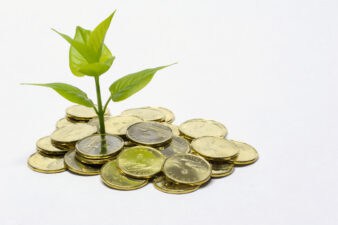Over the last decade, Potash Corporation of Saskatchewan Inc. (TSX:POT)(NYSE:POT) has been a pretty solid dividend-growth stock, albeit with quite a bit of volatility in the underlying share price.
In 2006 the company paid an annual dividend of just US$0.0667 per share, a rather minuscule yield. Even through 2010, Potash Corp. still only paid out US$0.1332 per share on an annual basis, not much for a stock that spent most of those years trading between $30 and $40 per share on the TSX.
In 2011 was when Potash Corp. really started getting serious about its dividend. Management upped the annual payment to US$0.28 per share and then followed that up by more than doubling it again in 2012, ending that year with an annual dividend of US$0.84 per share.
These days, Potash Corp. pays US$0.38 per share quarterly, which works out to US$1.52 annually. Based on the current exchange rate and a share price of $22.68 on the TSX as I write this, shares of Canada’s largest producer of potash currently offer investors a 8.9% yield.
That kind of dividend is bound to attract all sorts of income seekers. Is it something investors can count on over the long term?
I’m wary … should you be?
When looking at the sustainability of a dividend, the first place I go to is the cash flow statement. And unlike many of its peers in the commodity space, Potash Corp. is still generating plenty of cash flow.
For the first nine months of 2015, Potash Corp. generated more than US$1.7 billion in cash from operations. After subtracting the US$800 million spent on capital expenditures, we have a healthy free cash flow of US$900 million. With a market cap of US$13.5 billion, the company trades at about 11 times projected free cash flow for the year, which is a relatively cheap valuation.
But at the same time, it doesn’t leave a whole lot of wiggle room for the dividend. Free cash flow was approximately US$900 million for the first nine months of the year and cash dividends were US$899 million. That’s a payout ratio of pretty much exactly 100%.
There are also indications that the next few quarters won’t be as profitable as the last few. Revenue was down nearly 7% in the most recent quarter compared with the same period last year. Earnings for the quarter came in at US$0.34 per share, which doesn’t cover the US$0.38 per share quarterly dividend.
There are also issues with Potash Corp.’s balance sheet. The company has more than US$4.1 billion in debt compared to just US$73 million in cash. There’s always the argument that the US$1.2 billion in dividends could be put to better use delevering the balance sheet.
Analysts are also expecting potash prices to suffer in 2016. Prices for just about every crop are down compared with trading in 2015, and many North American farmers didn’t have good yields. Expectations are for potash prices to fall from the current level of approximately US$300 per tonne down to the US$250-per-tonne range. Potash Corp.’s management has responded to these issues by cutting some production, but analysts aren’t sure it’ll be enough.
A good dividend stock offers investors safe, predictable cash flows. With pressures on the price of potash, potential volume decreases for 2016, and a payout that’s only barely covered by free cash flow today, Potash Corporation of Saskatchewan doesn’t strike me as a safe dividend stock. There’s still the possibility the company can pull out of this slump without cutting the payout, but I’m not optimistic. I would avoid Potash Corp. as a dividend investment.
 Claim Membership Credit
Claim Membership Credit






